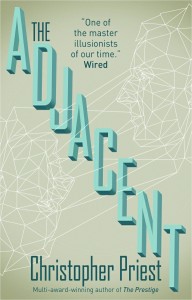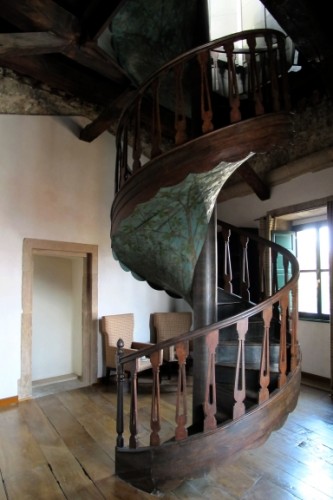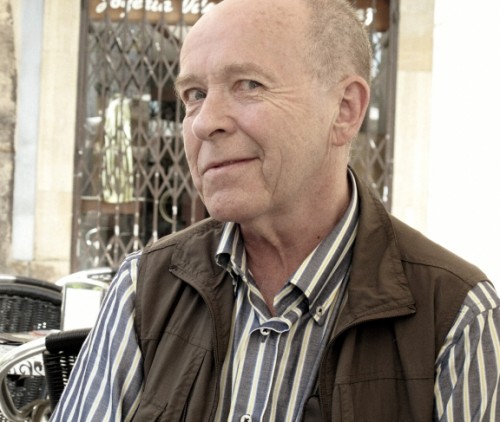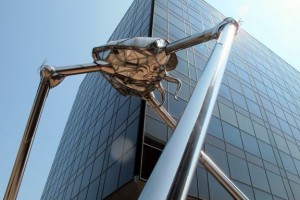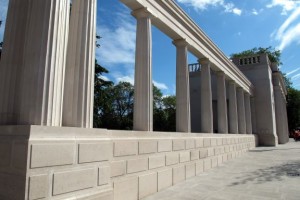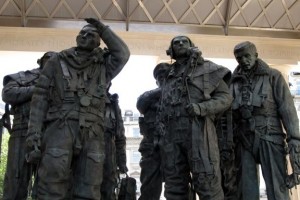I suddenly realize I have written nothing here since the beginning of August, just after returning from our trip to Avilés (below). I have been in that strange and unproductive realm where a new novel lurks tantalizingly out of reach. Many false starts have led to raised and dashed hopes, but I think I have finally cracked it. It doesn’t take more than a few words of draft to realize that you have found a way into a complex story, but it can take ages to reach that realization. A decade and a half ago I spent nearly six months fruitlessly trying to find a way in to the book that eventually became The Separation. I drafted some twelve different openings, only to realize that the very first attempt was actually the one I wanted and should have been using all along. Anyway, after only about six abortive attempts, the new novel now has a beginning I think will lead somewhere, and I have even worked out the title for it. Dark winter days with the comfort of something in progress lie ahead.
It has been a time of reading. I have just finished Simon Ings’s new novel, Wolves, which strikes me as certain to be one of the key books of next year. I have no idea why it is called Wolves, and I don’t like the cover (which I think separates me from everyone else), but it is a serious, ambitious and discomfiting novel.
I also gave a long and attentive reading to a new novel called Erotic Lives of the Superheroes, by Marco Mangassola. I truly wanted to like it, as in many ways it is extremely well wrought and appears to have been given an excellent translation (by Anthony Shugaar). The publisher, Salammbo Press, is a small independent house, who must have gambled heavily on the book. Good luck to them. But it’s a novel that takes superheroes seriously and literally, and because of that it walks directly into one of my blind spots. I thought Watchmen was pretty good, but firstly that was enough, and secondly it was a quarter of a century ago. I’m going to pass this copy across to Nina, as she is more receptive than I can ever be to this sort of thing. Sorry, Salammbo. Sorry, Signor Mangassola.
I am currently reading Richard House’s The Kills. I might be gone for quite a while.
We have also seen some terrific movies in the last few weeks, some of them real discoveries.
Try Chronicle (dir. Josh Trank, 2012), a fabulously entertaining found-footage sf film, written by Max Landis, son of John.
Holy Motors (dir. Leos Carax, 2012) was a real oddball, about a man touring Paris in the back of a limousine, performing good deeds (or otherwise) on the way. Kylie Minogue appears in a scene in a ruined department store, shades of Liebestraum, in one of the most surreal pieces of casting I can remember. The film is a lot better than David Cronenberg’s Cosmopolis, with which it is often compared (also about a man being driven around in the back of a limousine).
Alias Betty (dir. Claude Miller, 2001) comes close to being my film of the year so far – it is based on a novel by Ruth Rendell, and has a constantly intriguing structure and plot.
In spite of a long antipathy to the work of Neil Jordan (don’t ask), I rather enjoyed his new film Byzantium (2012) not least because it was filmed effectively here in Hastings, gaining little gasps of recognition from the audience in our local Odeon.
My film of the year so far: The Place Beyond the Pines (dir. Derek Cianfrance, 2012). The worst thing about the film is the title, which is meaningless, pretentious and irrelevant, and I’m certain helped ensure that few people paid to get into the cinema. On one level the film is a well-made violent thriller (starring Ryan Gosling), but the truly wonderful thing about it is its structure. It drives a train through the received Hollywood wisdom that films must have a certain story arc or structure: unless you peek at the reviews first (I rarely do) you will have no idea where this film takes you, or how it is going to turn out. It breaks most of the storytelling rules that so cramp Hollywood style, and does so brilliantly.
We caught up at last with Summer of Sam (dir. Spike Lee, 1999), which was another film that did not at all develop in the direction you assume from the subject-matter (serial killer in New York) and the opening scenes.
Finally: Silver Linings Playbook (dir. David O. Russell, 2012), a film about people suffering personality disorders, and unusually for a Hollywood film not softening up the awkward details. It is remarkable for a brilliant performance by Jennifer Lawrence. All of these films I recommend.
Currently: catching up with the box sets of Breaking Bad. Best thing I’ve seen on TV in years, rushing through it incontinently.
